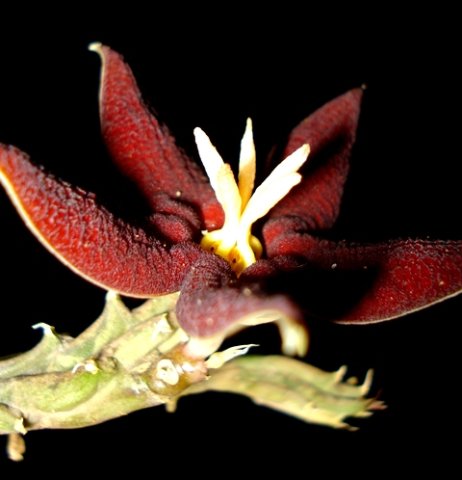Piaranthus atrosanguineus

Author: Ivan Lätti
Photographer: Judd Kirkel Welwitch
Piaranthus atrosanguineus, previously known as Huerniopsis atrosanguinea and by several other names since the days when it was a Stapelia, is a dwarf stem succulent.
The partly stolon-like stems lie flat on the ground or ascend; 7,5 cm long and 1 cm thick. The stems are four-angled with hairless surfaces, grey-green in colour. The conical teeth on the angled stem ridges, soon all that is left of the tiny, short-lived leaves on the plant, in turn have pairs of minute secondary teeth at the base.
The species distribution is in Mpumalanga, Limpopo and North West, particularly along the Limpopo and Steelpoort Rivers, as well as in Botswana.
The plants grow in a habitat of thorn tree and raisin bushveld. It may typically be found under Vachellia tortilis trees at elevations between 650 m and 1500 m. The species is not considered to be threatened in its habitat early in the twenty first century (Hardy and Fabian, 1992; White and Sloane, 1937; www.redlist.sanbi.org).

